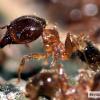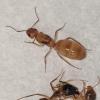Great video! One thing I would like to mention is that C. vicinus isn't in fact the only polygenous Camponotus in the United States and Canada. Camponotus clarithorax is polygenous as well.
Many of the smaller Camponotus spp. in the East are polygynous, too. Such as Camponotus subbarbatus, or Camponotus planatus. Camponotus vicinus is certaintly not the only polygynous Camponotus sp. in Canada and the United States.
You may have me on a technicality there, as Camponotus planatus is not native to the United States but has been collected in extremely southern localities in Louisiana, Texas, Mississippi, and Florida. I was referring to native species, and I should have been more specific in that description.
I would love to see some citations for the claims for C. subbarbatus. While I found no indication that they or C. nearticus are polygynous, I did find nest sampling literature that indicated that Camponotus nearticus is monogynous. I suppose it's possible that some of these ants are oligynous and/or have major locality differences for polygynous behavior. At any rate, my conclusion is that C. vicinus is likely the only documented, native species of Camponotus that exhibits polygyny at a high frequency.
Irrespective of the unexpectedly controversial claim about polygyny, I hope you all enjoyed the video.
Edited by Miles, January 17 2019 - 10:30 PM.























![[CA] Looking for Formica (can buy/trade) - last post by bmb1bee](https://www.formiculture.com/uploads/profile/photo-thumb-6841.jpg?_r=1649821237)




